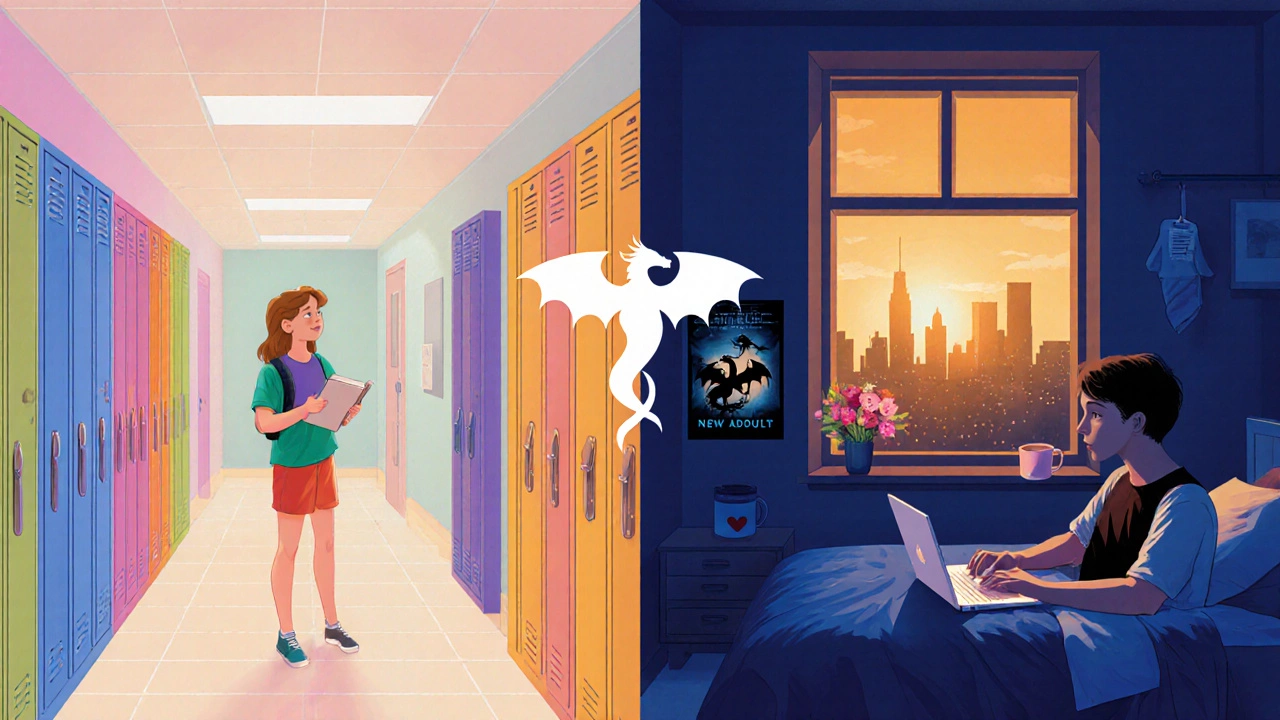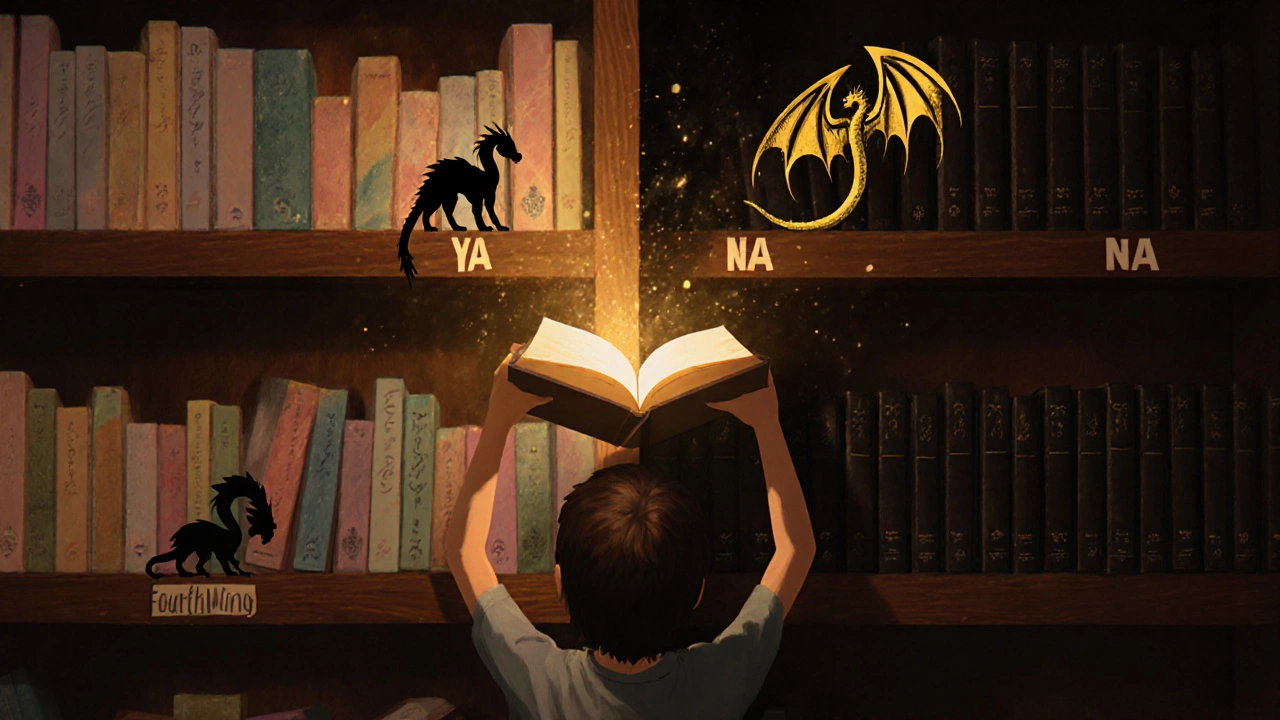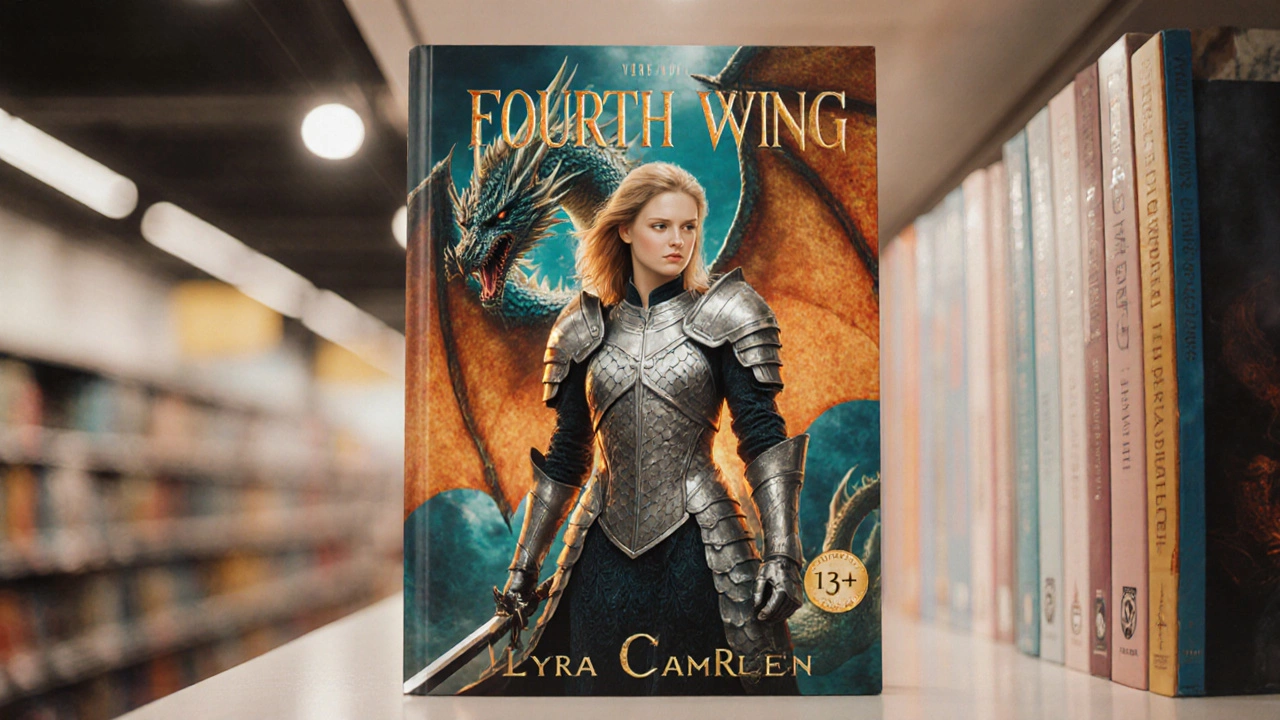YA vs. New Adult Classification Checker
Determine if a book belongs in YA or New Adult
Based on criteria from the article, this tool will help you determine where a book fits in the YA vs. New Adult classification debate.
Book Criteria
Analysis
YA Classification
Books in this category typically:
- Protagonist age: 12-18
- Word count: 60-100k
- Romance: Mild or no explicit content
- Violence: Low or moderate
- Themes: Identity, first love, school life
New Adult Classification
Books in this category typically:
- Protagonist age: 18-25
- Word count: 90-120k
- Romance: Explicit scenes allowed
- Violence: Moderate to high
- Themes: Independence, career, sexual identity
Classification Results
Enter book details to see classification
When you see the cover of Fourth Wing is a high‑fantasy debut that has been buzzing the shelves since its 2023 release. The big question on readers’ minds is: does it belong in the Young Adult (YA) shelf or the newer New Adult (NA) section?
What Exactly Is Young Adult?
Young Adult is a literary category aimed at readers roughly between 12 and 18 years old. It emerged in the late 1960s and solidified in the 1990s with titles like Harry Potter and The Hunger Games. Hallmarks include:
- Protagonists in high school or early college.
- Themes of identity, first love, family pressure, and coming‑of‑age.
- Violence, romance, and language that stay within a teen‑friendly ceiling.
- Typical word count: 60‑100k words.
Publishers often label YA books with a “13+” or “14+” age recommendation, and marketing leans heavily on school libraries and teen book clubs.
Defining New Adult: The Bridge Between Teen and Adult
New Adult straddles the 18‑25 age range. It grew out of the YA boom, targeting readers who have outgrown classic teen tropes but still crave stories that speak to life‑changing moments like moving out, first serious jobs, and more explicit romance. Core traits include:
- Protagonists in college, early career, or navigating first‑time independence.
- Exploration of sexuality, mental health, and financial stress with fewer content restrictions.
- Word count often stretches to 100‑120k words.
- Marketing usually appears in the “Women’s Fiction” aisles alongside romance and contemporary drama.
While NA isn’t a formal publishing category everywhere, major retailers like Amazon now have a dedicated NA tag.
Who Wrote Fourth Wing and What’s Its Core Premise?
Rebecca Yarros (author) launched Fourth Wing under Entangled Publishing in April 2023. The novel follows Lyra, a seventeen‑year‑old cadet recruited into a secretive dragon‑rider academy. The stakes are high: failure means death, and the kingdom’s fate hangs on the riders’ ability to tame fire‑breathing beasts.
The story blends classic bildungsroman beats (friendship, rivalry, self‑discovery) with gritty combat scenes and a romance that intensifies as Lyra battles both dragons and her own insecurities. By chapter ten, she’s seventeen‑and‑a‑half, officially an adult in many legal systems, but her emotional arc still reads like a teen’s first big‑life decision.
Key Metrics: Length, Rating, and Sales
Fourth Wing clocks in at 112,000 words, sits at a 4.3 ★ rating on Goodreads, and has sold over 850,000 copies on Amazon as of August 2025. Those numbers place it comfortably beside both YA blockbusters (The Mortal Instruments series) and NA hits (Beautiful Disaster).
Comparing YA vs. New Adult: How Fourth Wing Stacks Up
| Attribute | Young Adult (YA) | New Adult (NA) |
|---|---|---|
| Typical Age of Protagonist | 12‑18 | 18‑25 |
| Primary Themes | Identity, first love, school life | Independence, career, sexual identity |
| Content Restrictions | Mild profanity, limited explicit sex | More graphic language, explicit scenes allowed |
| Word Count | 60‑100k | 90‑120k |
| Typical Shelf Placement | Teen & YA sections | Women’s Fiction / Contemporary sections |
Fourth Wing clearly meets the NA word‑count benchmark, yet its protagonist’s age and the coming‑of‑age core remain deeply YA‑ish. This overlap is why the book feels like a hybrid.

Publisher Positioning: How Entangled Marketing the Book
Entangled Publishing listed Fourth Wing on its website with a “13+” tag, but the same listing on Amazon carries the “18+” label. The publisher’s press release highlighted the “dragon‑rider training program” as a hook for fantasy‑loving teens, while the Amazon description emphasized “intense romance and mature themes” aimed at older readers.
Social media campaigns also tell the story: Instagram teasers featured Lyra’s armor and dragon wings (YA‑friendly visuals), whereas TikTok clips showed deeper relationship moments and battle gore (NA‑leaning content). This dual‑track marketing strategy is common for books that sit on the genre border.
Reader Sentiments: What Fans Say About the Age Label
On Goodreads, reviewers split into two camps. The “YA lovers” praise the relatable teen angst, saying, “Lyra feels like the high‑school kid I was.” Meanwhile, NA enthusiasts comment, “The romance scenes are too explicit for a typical YA, and I love that.” The consensus: the book works for both, but individual comfort levels depend on personal taste.
Authors forums like r/FantasyBooks on Reddit report that librarians often file Fourth Wing under YA for shelving convenience, whereas college bookstores place it next to NA titles like The Love Hypothesis. This real‑world placement underscores the fluid nature of the categories.
Decision Guide: Should You Pick Up Fourth Wing as YA or NA?
If you’re a teen reader (13‑17) who enjoys epic fantasy and can handle some mature romance, the YA label makes sense. If you’re an older teen or young adult (18‑24) looking for deeper emotional stakes and more graphic scenes, the NA label fits better.
Below is a quick checklist to help you decide:
- Check the protagonist’s age - 17 = lean YA.
- Assess the romance intensity - if it’s explicit, think NA.
- Look at word count - 112k suggests NA, but not definitive.
- Consider your comfort with violence - dragons die, blood is shown; that leans NA.
- Read the publisher’s age recommendation - use as a baseline, not the final word.
Using this list, most readers will land somewhere in the middle, meaning the book can comfortably sit on both shelves.
Other Hybrid Examples: When Books Blur the Line
Fourth Wing isn’t alone. Titles like Six of Crows (YA with darker themes) and The Hate U Give (YA with powerful social commentary) also straddle the line. On the NA side, Red, White & Royal Blue (published as NA) attracted many teen readers because of its witty dialogue and high school‑like dynamics.
These examples illustrate that age categories are guides, not hard walls. The industry often uses them for sales reporting, but readers should feel free to cross them.
Final Thoughts: Where Does Fourth Wing Belong?
Putting everything together, Fourth Wing sits in a sweet spot: its protagonist and core coming‑of‑age journey scream YA, while its length, romance depth, and graphic action swing toward New Adult. The safest answer is: it is a YA novel with strong New Adult elements, making it a perfect pick‑up for anyone who likes fantasy with a bit more edge.
So the next time you scan the shelves, don’t stress about the label. Grab the book, flip to chapter three, and let Lyra’s dragon‑riding world decide for you.

Is Fourth Wing officially classified as YA?
The publisher lists it as a “13+” title, which places it in the Young Adult category. However, many retailers also tag it as New Adult because of its length and explicit romance.
What age range does New Adult cover?
New Adult targets readers roughly between 18 and 25. Themes often involve first jobs, college life, and more graphic portrayals of sexuality and violence than typical YA.
Can a teen still enjoy a New Adult book?
Absolutely. Many NA titles have universal appeal. Parents and librarians may check content warnings, but mature teens often read NA books without issue.
How does Fourth Wing compare to other hybrid books?
Like Six of Crows or Red, White & Royal Blue, Fourth Wing blends YA coming‑of‑age beats with NA‑level romance and action. The main difference is its fantasy setting and dragon‑rider academy, which adds a unique world‑building layer.
Where should I shelve Fourth Wing in my home library?
If your collection separates YA and NA, keep a copy in each section. That way, both teen and young‑adult readers can discover it easily.

